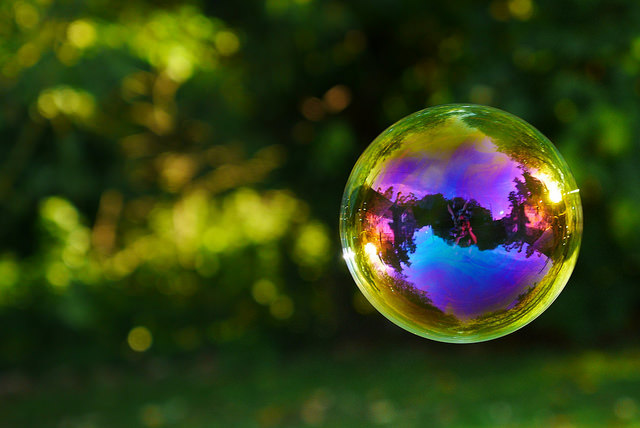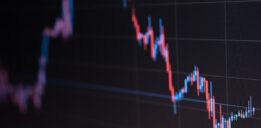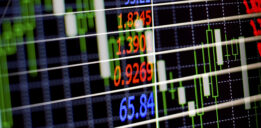The Second Tech Bubble Is About to Burst
You are right to wonder if we are in a tech bubble, but you don’t need to wonder any longer. Two tech unicorns, Uber Technologies Inc. and Snap Inc (NYSE:SNAP) are making headlines for all the wrong reasons. The possibility of an initial public offering (IPO) for Uber, a company that is allegedly worth almost $70.0 billion, has been feeling the effect of a negative campaign mounted by the #deleteUber movement.
Uber has reportedly lost some 200,000 customers in last January alone. The #deleteUber social media campaign accused the famous car sharing service founded by Travis Kalanick of profiting from President Donald Trump’s travel ban. Then there were the failed self-driving car tests.
Self-driving is ultimately where Uber wants to go. A crash in Arizona, however, has forced that plan to be put on hold. It’s not just the crashes. Google, which is owned by Alphabet Inc (NASDAQ:GOOG), is accusing Uber of plagiarizing its self-driving car technology. Uber’s troubles are benefiting its rival (Lyft, Inc.). But, because of its status as the most valuable tech unicorn, some have suggested that Uber’s mess could act as the first prick to burst the new tech bubble. (Source: “Uber’s pile-up of disasters,” The Week, April 2, 2017.)
Also Read:
The Dotcom Bubble Crash Explained in a Timeline
The only saving grace for the latter tech unicorn and the Silicon Valley tech bubble is that Uber does not trade in the public markets. That’s where Snap Inc (owner of “Snapchat”) comes into play. In the realm of tech IPO annals, Snapchat was a major hit. But this latest tech IPO suggests that investors should ask not will the tech bubble burst, but when will the tech bubble 2017 burst?
The Snapchat valuation for its IPO might be conservatively described as ludicrous. Some might even prefer the word “ridiculous.” Nevertheless, given the market’s status today as that of the Gods of ancient Egypt, who are we normal folks to argue with the investment banks? Regardless of whether we like it, Snapchat has triggered a wave of skyrocketing prices for tech stocks, signaling the second coming of tech fever.
Yes, there’s no mistaking that the Silicon Valley tech bubble is back and crazier than ever. You don’t need to be a financial expert to understand that the new tech bubble, “bubble 2.0,” could burst soon.
Nobody can predict when Snapchat will actually generate profits. Yet, for the time being, its stock is priced at $20.00 per share. Oh, just a few weeks ago after its IPO, Snapchat stock was trading at $27.00 per share. It had a market cap three times higher than Twitter Inc (NYSE:TWTR), and a market cap that was more than 30% higher than Fiat Chrysler Automobiles NV (NYSE:FCAU), one of the world’s oldest and largest automotive groups.
But Fiat Chrysler doesn’t just promise revenues and profits in the future. It actually boasts such convenient amenities as customers and sales. These are useful when analysts consider an appropriate valuation. Snapchat’s product is rather more ephemeral—posts that disappear, “or ghost-posts”—and of no specific value to anybody.
Snapchat and Tesla Are Two Major Stars of New Tech Bubble
Snapchat, an instant messaging company, was always going to aim high for its IPO: $19.0–$22.0 billion, or $14.00–$16.00 per share. Yet even those figures were closer to the distance between the sun from planet Earth than anything realistic for a startup, especially for a startup based on a narrow market niche—millennials—than a sustainable market base.
The price-to-earnings (P/E) ratio for Snapchat is practically incalculable, given its lack of earnings. The company, though, has promised to double revenues. But, even by those standards, Facebook Inc (NASDAQ:FB) trades at about 12 times earnings. In comparison, Fiat Chrysler, a more industrial-revolution-era business, has a P/E ratio of just under 8.0.
Snapchat, meanwhile, closed 2016 with a net loss of $514.6 million (compared to a net loss of $372.9 million in 2015). In short, those who have invested in Snapchat stock should consider the possibility that they have been gambling rather than investing. They are hoping that sooner or later, the company will manage to achieve earnings.
Snapchat is not an isolated case. That’s why the predictions are not for a Snapchat bubble, but a whole tech bubble. Tesla Inc (NASDAQ:TSLA) is another example of the rising tech bubble. Tesla shares recently hit a record high of $298.5 on the NASDAQ. Tesla’s market cap of about $48.0 billion has even reached that of Ford Motor Company (NYSE:F).
Yet, Ford sells almost some nine million cars a year. Ford sold its first car over a century ago. Now Tesla is going after General Motors Company (NYSE:GM), which has a market cap of some $51.0 billion. Note that Ford has several electric cars in its future lineup, while GM is already selling a mass-market electric car, the “Bolt,” which rivals Tesla’s famed “Model 3” in price (cheaper) and performance.
Tesla, Seller of Environmental Redemption and the Potential Trigger of the Bubble Burst
Tesla is selling dreams, promises, and some sort of religious redemption to achieve its mega-valuation. Its “Gigafactory” will soon be able to address the demand for Li-ion batteries, and Tesla has set its production target at 500,000 for 2018. Investors can hope, as the company lost $675.0 million on revenues of $7.0 billion.
Tesla is literally poised to overtake General Motors with the honorary title of America’s largest carmaker by market cap. But Tesla could be the symbol of an even more significant phenomenon. Tesla’s apparent success (its valuation is still based on unrealized expectations) suggests that it’s not only software and computers that power the tech sector. The automobile industry has shifted from Detroit to Silicon Valley.
Tesla suggests that the traditional American—and perhaps the global—automotive sector is heading for one long pit stop. Or maybe the Fords, GMs, and Chryslers of the world are heading to the very end of their race. That’s what Tesla wants investors, customers, and fans to perceive. But, it’s just a perception.
The big Detroit manufacturers have seen various technological revolutions already. They have adapted to European, Japanese and Korean competition. They even adapted to an oil crisis that forced a complete reboot of the very concept of what an automobile was about in the 1970s. Indeed, the big automobile manufacturers can adapt, and they will manage the inevitable transition away from oil.
Also Read: Warren Buffett Indicator Predicts Stock Market Crash in 2017
For now, the irrational exuberance is on Tesla’s side. Tesla is in Silicon Valley, and it’s a NASDAQ-listed company. Both of those factors account for its premium appeal, despite a financial picture that could hardly be less reassuring. One of the problematic aspects of Tesla is that all those concerned, including the analysts, evaluate it outside of its context as a car manufacturer.
The automobile market, thanks also to the emergence of non-traditional credit sources, is enjoying one of its most buoyant periods of the past 20 years. But how long can this last? The financial markets in general have been rising beyond any logic. President Trump has promised much, but has delivered little.
The Coming Economic Collapse
Trump may even be mulling the idea of getting America bogged down in another Middle Eastern war. In fact, far from being Vladimir Putin’s buddy, Trump might achieve all the worst nightmares that many feared Hillary Clinton would unleash on America, including a war against Russia. Buying a car will not be a priority if the sirens of World War III start sounding.

Credits: Flickr.com/zacktionman
Even without the threat of thermonuclear war, historically, after a long period of rising car sales, a slump follows. The top of the cycle might be near, considering that all of the major vehicle manufacturers saw signs of declining sales in March 2017. Tesla saw higher sales, but its cars are still niche. Thus, Tesla’s sales did not rise because the company attracted Ford or GM customers into its showrooms.
The U.S. Federal Reserve has just proceeded to its third interest rate increase since the end of 2015, and plans to make two more this year. As for the labor market, there are no compelling reasons that it will improve much further. Besides, Trump’s plans for trade, tariffs, and immigrant bans could trigger a major economic slowdown.
Add to that the potential of a major market crash increasing by the day, and the picture is dire. The prospects for all-out war are higher in 2017 than they were in 1962. Once that idea reaches the markets, optimism will wane. Thus, the eventuality of a bearish market will add to the current list of economic grievances that include a sluggish GDP growth rate, rising costs and lower wages.
In this context, the wild valuations of companies that add little to the real economy, like Facebook and Snapchat, will get their long overdue reality checks. These are just some of the Silicon Valley companies that have fueled the latest tech bubble. Tesla, as a car manufacturer, will eventually encounter the kinds of problems already faced by Ford and GM.
The eventual financial and economic collapse will cause a credit crunch. Tesla will have to offer discounts, just as Ford and GM have been doing, to move cars off the lot. Its green-tech veneer won’t help it when fewer people have the disposable income to acquire one.
Tesla sold only 76,230 vehicles in 2016 (40 times fewer than GM). Tesla’s valuation, like all of the ones fueling the next tech bubble, are based on confidence and trust. These are the sentiments of investors who are betting on the success of future technology. Hope is the last to die, but it dies after the market crash.
The current tech bubble has few examples of winners. Yes, Facebook has won big. Its P/E is still an ideal subject for astronomers calculating distances to stars, but it has been a market success. The same cannot be said for Twitter, or even veteran Yahoo! Inc. (NASDAQ:YHOO) and a host of others.
In the end, the new tech bubble is based on a well-known script that played out at the beginning of the millennium. Billion-dollar market caps reduced to rubble, with only the jokes from Pets.com and the faint echo of an exploding bubble left as a memory.







